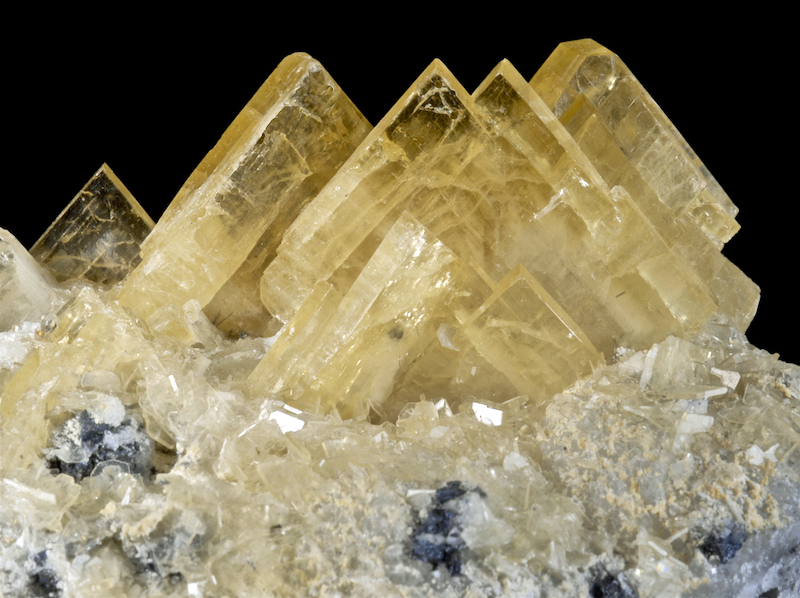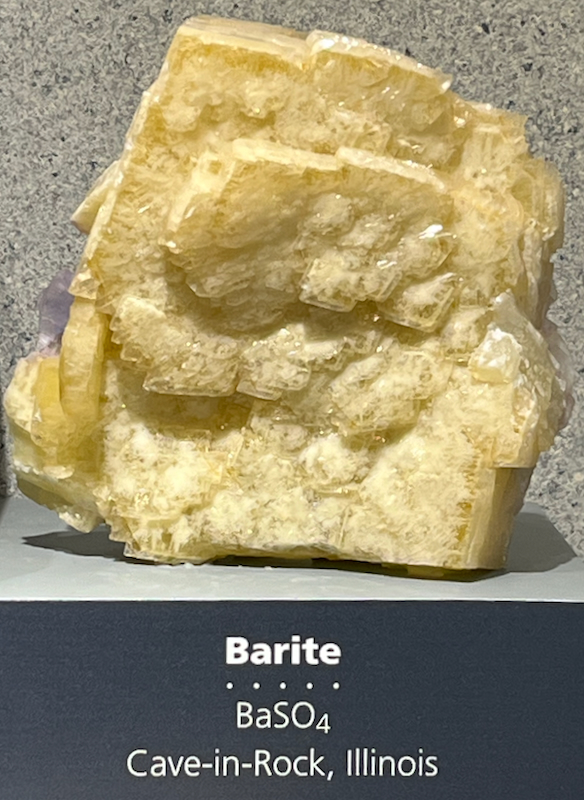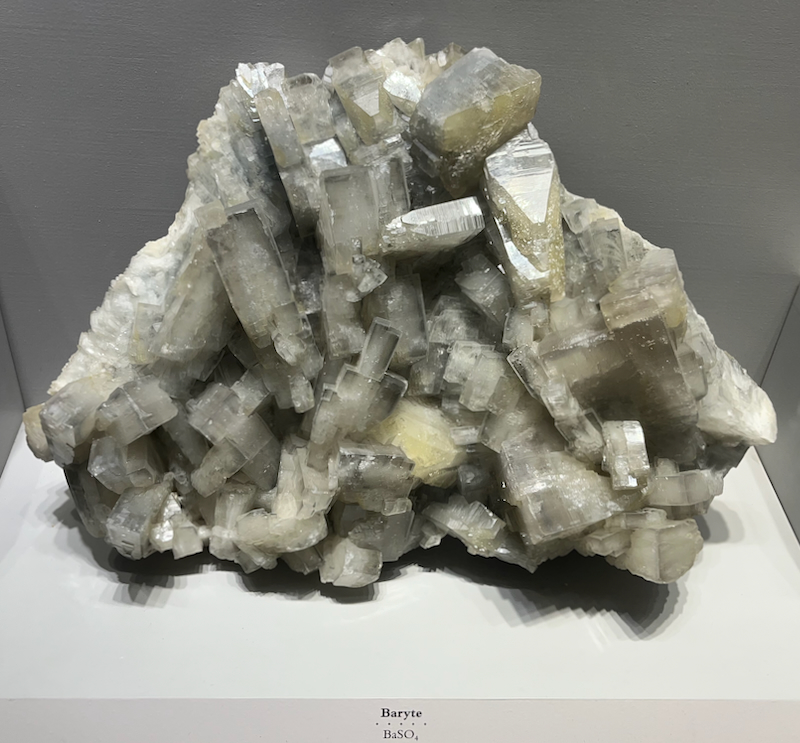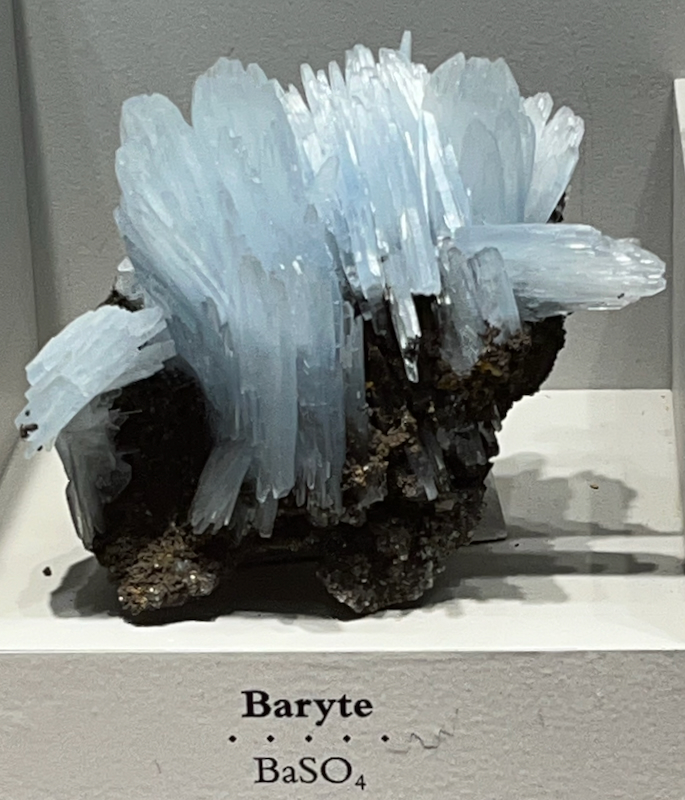Baryte
The mineral world is full of “ites”—calcite, prehnite, rhodochrosite, etc., etc.—but the powers that be in the mineral world recently decided that for what many people called “barite,” they would make us use the oldey timey, more British “baryte.” Baryte, ahem, is a mineral with many uses. It’s fairly soft, only 3 on the Mohs scale, and can easily be ground up into a powder. As a powder, it’s added to the mud produced when drilling for oil to make the drilling go more smoothly, it goes into a not-too-tasty beverage you drink when a doctor wants to X-ray your digestive system to see what’s going on, and it’s added to paint to help it provide a nice smooth finish. Baryte can occur in several different colors, but you’ll usually see yellow, brown, gray, or blue crystals. It also comes in several crystal habits, including flower-shaped “desert roses”! With the different colors and shapes, sometimes it’s not easy to identify by looking at it. But one easy way to tell the difference between it and other minerals is its high specific gravity (4.5)—it’s much heavier than sometimes similar-looking calcite (2.7), for example. In fact, its name comes from the Greek word for “heavy.”
| Formula | Group or Type | Shape | Hardness | Specific Gravity | Streak | Luster |
|---|---|---|---|---|---|---|
| Ba(SO4) | — | Orthorhombic | 2.5–3.5 | 4.5 | White | Vitreous to pearly |




